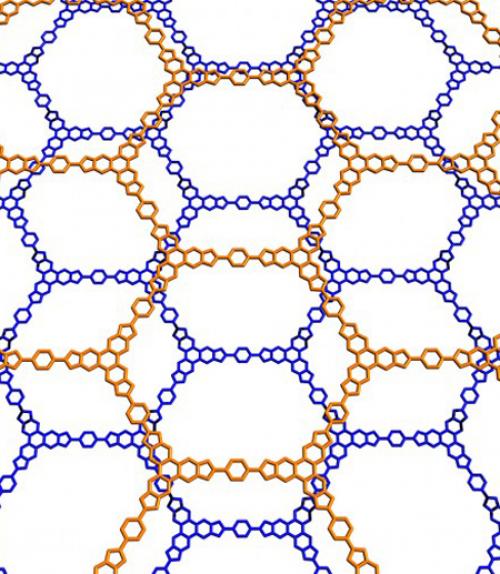Understanding Complex Pore Systems (Matrix, Organic, Micro/Nano) in Unconventional Source Rocks

Understanding Complex Pore Systems in Unconventional Source Rocks
Unconventional source rocks, such as shale and tight sandstone, present a significant challenge to hydrocarbon extraction due to their complex pore systems. Unlike conventional reservoirs with relatively large and interconnected pores, unconventional reservoirs possess a multifaceted network of micro- and nano-scale pores embedded within a heterogeneous matrix. This intricate structure significantly impacts reservoir properties and ultimately, the success of production. Understanding these pore systems is crucial for effective resource appraisal and enhanced recovery strategies.
Defining the Pore System Components

The pore system in unconventional source rocks can be broadly classified into three main components:
- Matrix pores: These are the inherent pores within the rock's mineral framework. Their size and shape are dictated by the mineralogical composition and diagenetic history of the rock. They are often the dominant pore type in terms of total pore volume, but their connectivity can be poor.
- Organic pores: These pores reside within the organic matter itself, particularly kerogen. Kerogen undergoes significant changes during thermal maturation, affecting the pore structure and ultimately the capacity to store and transmit hydrocarbons. The size and connectivity of these pores vary depending on the type and maturity of the kerogen.
- Micro/Nano pores: These are the smallest pores, ranging from micrometers to nanometers in diameter. They are typically found within both the inorganic matrix and the organic matter. Their small size significantly restricts fluid flow, posing a major challenge for hydrocarbon production.
A Brief History of Understanding Unconventional Pore Systems
The characterization of unconventional pore systems has advanced significantly in recent decades. Early studies relied primarily on macroscopic measurements, such as porosity and permeability, which provided limited insights into the intricate pore network. The advent of advanced imaging techniques, such as scanning electron microscopy (SEM), focused ion beam scanning electron microscopy (FIB-SEM), and nuclear magnetic resonance (NMR), has revolutionized our understanding. These techniques allow for visualization and quantification of pores at various scales, revealing the complexity and heterogeneity of the pore network.
Benefits of Understanding Complex Pore Systems
A comprehensive understanding of the pore system in unconventional source rocks offers several key benefits:
- Improved Reservoir Characterization: Accurate assessment of pore size distribution, porosity, permeability, and connectivity is crucial for realistic reservoir modeling and production forecasting.
- Enhanced Completion Strategies: Knowledge of pore structure guides the design of optimized hydraulic fracturing treatments, maximizing fracture propagation and hydrocarbon recovery.
- Development of Advanced Stimulation Techniques: Understanding the limitations posed by the pore system facilitates the development of novel stimulation techniques targeting specific pore types or improving fluid flow.
- Reduced Uncertainty in Resource Estimation: More accurate reservoir models lead to less uncertainty in resource estimations, improving investment decisions.
Applications of Pore System Knowledge

The knowledge gained from studying complex pore systems is vital in various applications:
| Application | Benefit |
|---|---|
| Reservoir Simulation | More accurate prediction of production performance |
| Hydraulic Fracturing Design | Optimization of fracture geometry and conductivity |
| Enhanced Oil Recovery (EOR) Techniques | Development of tailored EOR methods for specific pore types |
| Exploration and Appraisal | Improved assessment of resource potential |
Related Concepts

Understanding unconventional pore systems requires familiarity with related concepts such as:
- Kerogen type and maturity
- Mineral composition and diagenesis
- Fracture network characteristics
- Fluid flow in porous media
- Capillary pressure and wettability
Summary and Future Outlook

The complex pore systems in unconventional source rocks present both challenges and opportunities for hydrocarbon production. Advances in characterization techniques continue to improve our understanding of these intricate networks, leading to more effective reservoir management and enhanced recovery strategies. Future research will likely focus on developing even more sophisticated imaging and modeling techniques, as well as exploring novel stimulation methods to unlock the full potential of these challenging reservoirs.
FAQ

- Q: What is the main difference between conventional and unconventional pore systems?
A: Conventional reservoirs have larger, interconnected pores, while unconventional reservoirs possess a complex network of smaller, less connected micro- and nanopores. - Q: Why are micro/nanopores so challenging for hydrocarbon production?
A: Their small size restricts fluid flow, making it difficult to extract hydrocarbons efficiently. - Q: What role does kerogen play in unconventional pore systems?
A: Kerogen contributes significantly to the total pore volume and influences the overall pore network characteristics. - Q: How can we improve the understanding of unconventional pore systems?
A: Continued development of advanced imaging and modeling techniques, coupled with improved understanding of rock physics, is crucial.